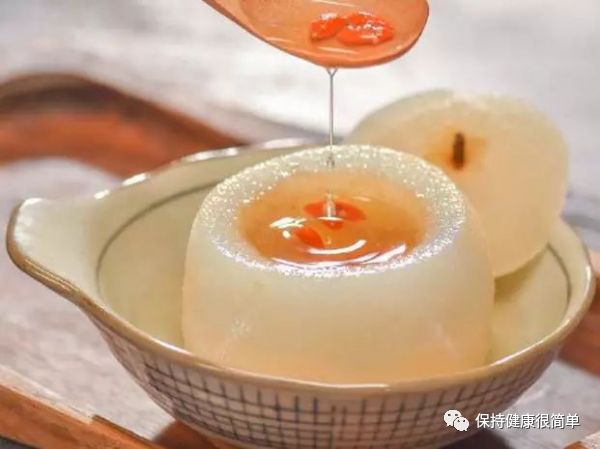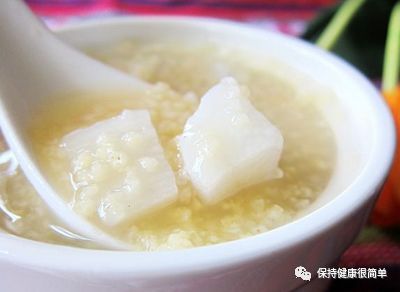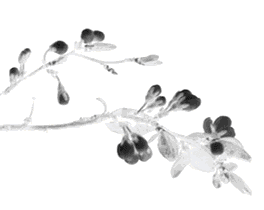Every year at this time, there are particularly many cases of Wind-Cold common cold, and many people around start to cough, produce phlegm, have a runny nose, and sneeze. Some have a cold, some have asthma, some have bronchitis, some have rhinitis, and others have seasonal cough.


Wind-Cold Common Cold
It is uncomfortable to hear about it, and even more uncomfortable for those who are sick. If you have friends like this around you, share this article with them; it will definitely help!

Wind-Cold Common Cold 1: Wind-Cold Cough with White Radish and Honey
Main symptoms: heavy cough, itchy throat, expectoration of thin phlegm, accompanied by headache, nasal congestion, runny clear nasal discharge, fear of cold, and fever.
White radish can assist in treating various diseases. It can regulate Qi, transform phlegm, generate fluids, and stop cough, as well as tonify the kidneys and benefit Qi, alleviating cough.
Honey has effects such as tonifying the middle and relieving urgency, moistening the lungs and stopping cough, moistening the intestines, detoxifying, and beautifying. The combination of the two is an excellent method for alleviating cough symptoms.
First, take a white radish, wash and peel it; cut the radish into small cubes; take half a bottle of honey and pour the cut radish into the honey.
After 2 hours, take out a large tablespoon of the radish-honey juice, dilute it with warm water, and drink it 4-5 times a day. The cough symptoms can be alleviated from the next day, and this method is also effective for asthma.
Wind-Cold Common Cold 2: Roasted Orange for Wind-Cold Common Cold
Eating roasted oranges can calm cough and eliminate phlegm, mainly due to the action of the orange peel. Roasting the orange removes the irritating smell of fresh orange peel and increases the content of its effective components. Roasted oranges do not affect the taste and nutritional value while enhancing the phlegm-eliminating and cough-calming effects.
Roasted oranges are particularly effective for cough caused by Wind-Cold common cold, with main symptoms including: low cough sound, abundant white frothy phlegm, cold limbs, and runny clear nasal discharge.
Wash the orange, soak it in water at 40℃~50℃ for 3 minutes, dry it with a cloth, and roast it until slightly charred. Eat one (with skin) in the morning, noon, and evening.

Wind-Cold Common Cold 3: Steamed Pear Juice with Rock Sugar for Excess Lung Fire Cough

Wind-Cold Common Cold
Pear moistens the lungs, clears heat, generates fluids, and when used with rock sugar, enhances the moistening and cough-stopping effects, suitable for treating dry cough, cough without phlegm, dry lips, and dry throat, especially suitable for autumn consumption.
Peel the snow pear, cut off the top, scoop out the core with a spoon, place rock sugar in the center, cover it, and steam the pear in a steamer for about 30 minutes before eating. It is necessary to persist in eating several times to see results.
Wind-Cold Common Cold 4: Egg Flower Honey for Morning Cough
Honey water can relieve cough, and adding an egg may enhance the effect.
Beat an egg and pour boiling water over it to make egg flower, let it cool slightly, add a spoonful of honey, and a few drops of sesame oil. Drink it on an empty stomach every morning for 10-15 days to see results.
Wind-Cold Common Cold 5: Sesame Rock Sugar Water for Night Cough
Sesame is sweet and neutral, slightly cool when raw, rich in oil, can nourish the lungs and kidneys, and when combined with rock sugar, it can nourish Yin, moisten dryness, and stop cough, particularly effective for internal injury dry cough.
Take 15 grams of raw sesame and 10 grams of rock sugar, place them in a bowl, and pour boiling water over them.
Wind-Cold Common Cold 6: Sugar Water with Egg for Weak Body Cough
People who are usually weak will have prolonged cough when they catch a cold. Those who are weak and cough can drink sugar water with egg.
Beat an egg into a bowl, mix it, boil 50 grams of white sugar with half a bowl of water, pour it hot over the egg, stir, and then prepare an appropriate amount of fresh ginger juice to add to the egg soup. Take it once in the morning and evening.
Wind-Cold Common Cold 7: Rock Sugar Garlic Water for Persistent Autumn Cough
People who start coughing after the autumn equinox should not use pears to relieve it, as pears are cold in nature and can aggravate the cold in the body. If the patient has a white tongue coating and thin phlegm, this method can be used.
Prepare 7-10 cloves of garlic, crush them and place them in a bowl, add water, place a piece of rock sugar on top, and cover it before steaming in a pot.
Boil on high heat, then switch to low heat and steam for 15 minutes. When the water in the bowl is no longer hot, drink it. The garlic can be left uneaten, and drink 2-3 times a day to relieve cough.

Wind-Cold Common Cold 8: Coughing at Midnight and at Dawn with Phlegm
Some middle-aged and elderly people have a habit of coughing at midnight or at dawn, and after a bout of coughing, they fall back asleep. Careful observers will notice that this cough often has phlegm. It is best to slowly get up, sit up straight, and drink a cup of warm water to dilute the phlegm for easier expectoration.
Take 15 grams each of cooked rehmannia and perilla, 12 grams each of cinnamon, white mustard seed, and deer antler glue, 10 grams each of blast ginger, ephedra, and rice husk, 9 grams of schisandra, and 6 grams of honey-fried licorice, decoct in water, and take one dose daily in the morning. After taking 6 doses, the cough will generally be significantly reduced.
Wind-Cold Common Cold 9: Common Cold Xiang Su Powder
Take 5 grams of perilla leaves, 4 grams each of dried tangerine peel and cyperus, and 2.5 grams of honey-fried licorice, and 3 grams each of schizonepeta, gentian, saposhnikovia, and vitex.

Wind-Cold Common Cold 10: Drink a Bowl of Yam Porridge After Recovering from a Cold
Some people with weak constitutions may still experience fatigue, mental exhaustion, and poor appetite after recovering from a cold. At this time, I recommend drinking yam porridge, which can be made from either fresh or dried yam.
Yam is a commonly used medicinal material, sweet and neutral, a food that tonifies the spleen, lungs, and kidneys. Additionally, women often eat yam porridge for its many benefits, which can strengthen the spleen and stop leukorrhea. However, it should be noted that yam has astringent properties, so it is not suitable for those with constipation.
Select 60 grams of yam and 100 grams of japonica rice. Peel the yam, cut it into small pieces, and cook it with the japonica rice in water until done, adding an appropriate amount of white sugar for consumption. Drinking a small bowl daily is sufficient.


Follow the QR code
Maintain a good mood
Maintain good health

